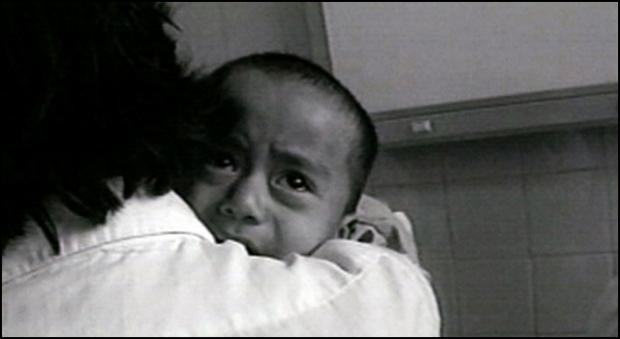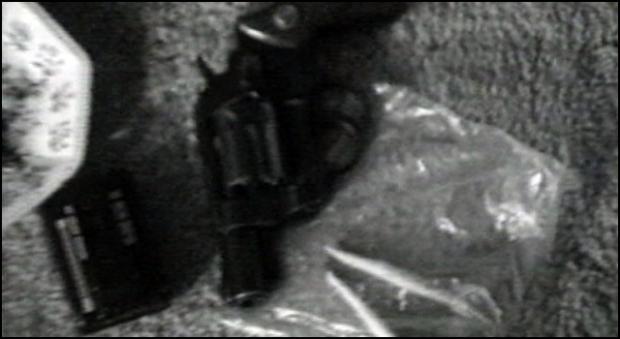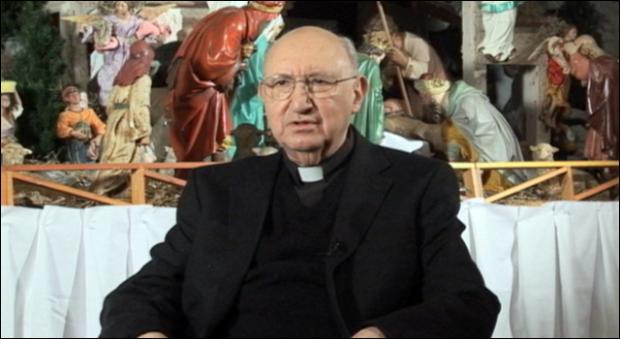Documentaries
AMI lives and breathes the documentary form in its many variations. As documentary filmmakers, we recognize that while we're capturing reality, we are also projecting ourselves. Our deep understanding of documentary production allows us to bring the soul of the subject and the vision of its creators to life. AMI lives and breathes the documentary form in its many variations. With our experience, talent and intimate knowledge of the form, we are proud to create consistently compelling documentaries.
Magnum Eye: The Peruvian Equation
Gilles Peress is an internationally renowned French photojournalist known for his documentation of war and strife, including in Northern Ireland, Yugoslavia, Iran, and Rwanda. His work has appeared in the New York Times Magazine, Du magazine, Life, Stern, Geo, Paris-Match, Parkett, Aperture and The New Yorker. He joined Magnum Photos in 1971 and served three times as its vice president and twice as its president.
"I work much more like a forensic photographer in a certain way, collecting evidence. I've started to take more still lifes, like a police photographer, collecting evidence as a witness. I've started to borrow a different strategy than that of the classic photojournalist. The work is much more factual and much less about good photography. I don't care that much anymore about "good photography." I'm gathering evidence for history, so that we remember"
– Gilles Peress
Peress began working as a photographer in 1970, embarking on an intimate portrayal of life in a French coal mining village, Decazeville, as it emerged from the ashes of a debilitating labor dispute. In 1973 he photographed Turkish immigrant workers in West Germany and documented the European policy to import cheap labor from the third world. "Peress has worked as a journalist to help finance those projects that constitute his personal search—a search to understand his own history." [2] He then joined Magnum Photos.
Peress soon traveled to Northern Ireland to begin an ongoing 20-year project about the Irish civil rights struggle. One of his most famous pictures from this period captures a young man named Patrick Doherty moments before he was killed whilst crawling to safety in the forecourt of the Rossville flats during Bloody Sunday (1972).
Power in the Blood, a book that synthesizes his years of work in Northern Ireland, is the first part of his ongoing project called Hate Thy Brother, a cycle of documentary stories that describe intolerance and the re-emergence of nationalism in the postwar years. Farewell to Bosnia was the first part of this cycle, and The Silence, a book about the genocide in Rwanda, was the second.
In 1979 Peress traveled to Iran in the midst of the Revolution. His highly regarded book, Telex Iran: In the Name of Revolution, is about the fragile relationship between American and Iranian cultures during the hostage crisis.
Peress has also completed other major projects, including a photographic study of the lives of Turkish immigrant workers in Germany, and a recent examination of the contemporary legacy of the Latin American liberator Simon Bolivar.
Now, Peress is professor of Human Rights and Photography at Bard College in New York and is Senior Research Fellow at UC Berkeley.
Bullying: You Don't Have to Take It Anymore
Hourglass Production’s latest film takes the school bully by the horns! This essential program was designed for young viewers to demystify their school and peer environment.
Interviews with teenagers, dramatic scenarios, and expert advice, all contribute to give young adolescents the tools to deal with bullying situations.
Dr. Michael Thompson, Ph. D. co-author of the New York Times best seller “Raising Cain: Protecting the Emotional Life of Boys” and “Best Friends, Worst Enemies: Understanding the Social Lives of Children,” says that “Bullying: You Don’t Have to Take it Anymore” will “encourage and support those children who want to do something to stop bullying-- and that is the vast majority of children.”
Magnum Eye: JabJab
Bruce Davidson made this film at the world famous Gleason’s Gym in the DUMBO neighborhood of Brooklyn. He has been a member of the Magnum Photos agency since 1958. His photographs, notably those taken in Harlem, New York City, have been widely exhibited and published.
After his military service, in 1957, Bruce Davidson worked briefly as a freelance photographer, before joining Magnum the following year. During the following few years, he photographed extensively, most notably producing Brooklyn Gang and The Dwarf. From 1961 to 1965, Davidson produced one of his most famous bodies of work as he chronicled the events and effects of the Civil Rights Movement around the country, in both the North and the South. In support of his project, Davidson received a Guggenheim Fellowship in 1962, and his finished project was displayed at the Museum of Modern Art in New York. Upon the completion of his documentation of the Civil Rights Movement, Davidson received the first ever photography grant from the National Endowment for the Arts.
Davidson’s next project, East 100th Street, is perhaps his most famous. Considered a modern classic,East 100th Street was a two-year documentation of an infamousblock in East Harlem. This project was also displayed at the Museum of Modern Art. Davidson followed this with Subway, a classic portrayal of the New York subway system, in the late 1970s. Using color to convey mood, Davidson documented a gritty and lively urban underworld. Over a decade later, in the early 1990s, Davidson completed a four-year exploration of Central Park, showing it as a beautiful and grand homage to New York City.
In 1998, Davidson returned to East 100th Street to document the revitalization, renewal and changes that occurred in the 30 years since he last documented it. For this visit, he presented a community slide show and received an Open Society Institute Individual Fellowship Award.
In addition to his best known publications, many of Davidson’s lesser known works have appeared around the world and in many museums. In 2008, a book appeared of his portraits of people, such as John Cage,Marilyn Monroe, Leonard Bernstein, Kiki Smith, Fannie Lou Hamer, Andy Warhol and Jack Kerouac.
Davidson continues to work as an editorial photographer. His photographs appear around the world and in many museums. Also, Davidson has directed two award-winning short films, a documentary titled Living off the Land and a more surreal tale titled Isaac Singer’s Nightmare and Mrs. Pupko’s Beard.
He lives in New York City with his wife, Emily.
An image from his Brooklyn Gang series was used as the cover for Bob Dylan's 2009 album Together Through Life.
He received the Outstanding Contribution to Photography Award at the 2011 Sony World Photography Awards.
Magnum Eye: Getting Out
Eli Reed is a Magnum photographer and professor at the University of Texas at Austin School of Journalism.
"Getting Out" is the 1992 documentary on Detroit gangs that Reed directed and filmed by for the Magnum Eye series on Channel 12 of TV Tokyo. It was exhibited at the 1993 New York Film Festival, and honored by the 1996 Black Filmmakers Hall of Fame International Independent Film and Video Competition in the documentary category.
Monsignor Granato and Saint Lucys - True Devotion
This is a shortened version of a documentary made for St. Lucy's of Newark's 1st Ward and it's long standing priest, Monsignor Granato. It explains the history of the the Italian-American community it's relationship to St. Lucys and how the church, the community and the Monsignor survived the tough times in Newark to evolve into the diverse parish it is. This includes the explain of St. Lucys as the North American home for the shrine of St. Gerard, patron saint for children (and unborn children in particular), childbirth, mothers (and expectant mothers in particular), motherhood, falsely accused people, good confessions, lay brothers and Muro Lucano, Italy.
The Road to Eden
This program produced and directed by Jason Goodman co-creator of the hit series "Behind the Music" investigates an often forgotten part of our population, those that are left in nursing homes. Mr. Goodman heard about a new and unique program called the, The Eden System. This program is meant to raise the level of love, care and dignity available to the nursing homes by introducing plants, animals, and children into the lives of the elderly and infirm.
Mr. Goodman's cameras chronicled the impact the Eden System had on the nurses, children, cats, and dogs and of course the elderly characters folks whose lives were changed forever. American Montage post-produced this important and insightful program.
- « first
- ‹ previous
- 1
- 2
- 3












